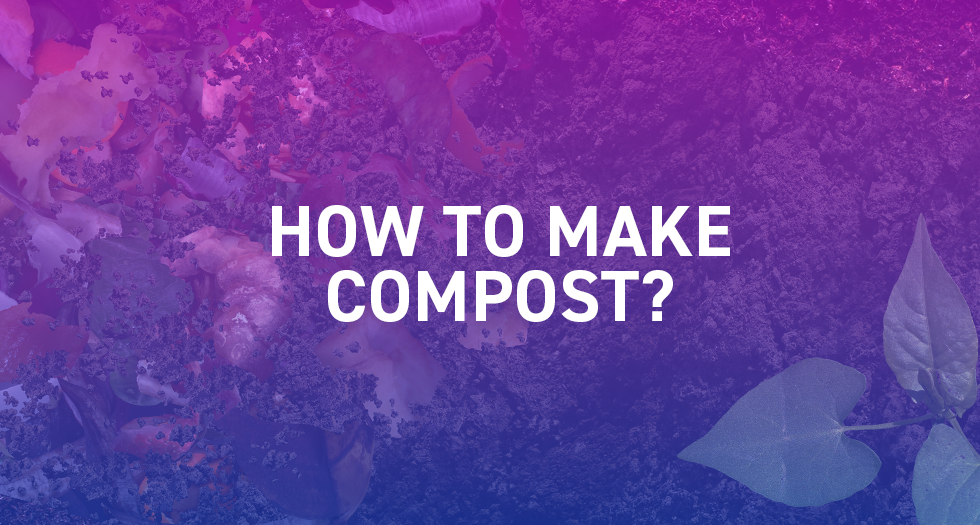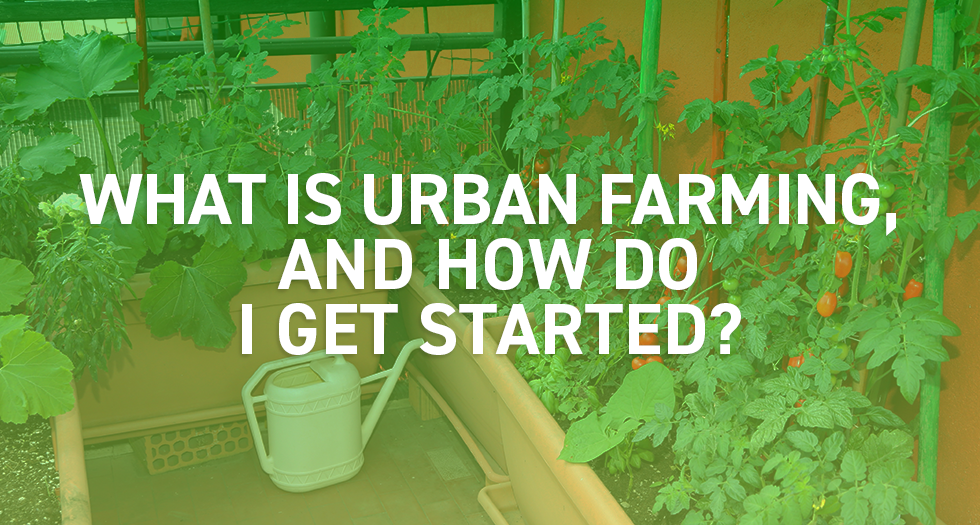Save money and get the feel-good factor from making your own compost. Great plants are born out of good nutrients, so learning how to make your own compost can improve your yield as well as your green credentials.
Composting is a great way to recycle garden cuttings and cut back on the amount of food waste that is taken away with the weekly refuse collection.
It may surprise you but not all food waste is recycled by your local authority. Some of it may end up in landfill where it will produce greenhouse gases and pose a threat to the environment.
Composting at home is kinder to the environment as the process is biogenic as opposed to anthropogenic. As a result, making your own compost heap in the correct way should not contribute to greenhouse gases. Our beginners guide below explains how you can make your own compost at home using the hot, cold and bokashi techniques.
Read on for our homemade recipes for making nutrient rich compost!
The difference between hot and cold composting
There are two traditional methods of composting - hot and cold. Hot composting is a quicker process. This is because the heat generated breaks down the material quickly, meaning you can have ready to use fine compost in a month or under. This process also kills off pathogens such as bacteria and viruses as well as seeds, but it is more labour intensive as you need to regularly turn the heap.
Cold composting, on the other hand, is a slower process because regularly adding fresh waste will prevent the pile from heating up to optimal temperatures. With this method, you don't have to keep turning the pile if you don’t want to. Instead, you can add material to the pile and leave it to sit and decompose. Due to the lower temperatures generated throughout the process, this method won’t kill off pathogens. Therefore, you should always make sure that you never add diseased plants into the mix.

CANNA Gloves
|

Round Plastic Bucket
|

Compost Scoop
|
How to make compost in your garden
To make compost in the garden, you will need a compost bin. You can buy these pre-made from timber or plastic. Alternatively, you can make one yourself from old wood and chicken wire. Traditional garden compost bins should ideally be placed directly on soil in a sunny spot in your garden. The bin should also have a lid to keep rainwater out. Placing the bin onto soil will encourage worms and other organisms to interact with the waste which will help to speed up the process.
A balancing act
Producing quality compost is a balancing act. You need to make sure that you get the right balance of carbon and nitrogen. A general rule of thumb is to ensure that every time you add green nitrogen rich waste to the compost bin, you should also add an equal amount of carbon rich ‘brown’ material to layer on top. This will prevent the heap from becoming too nitrogen rich. If your heap has too much nitrogen it can cause the compost to become sludgy and emit a bad odour.
Green organic waste includes things like grass cuttings, fruit and vegetable peelings, tea leaves (ensure to remove non-biodegradable bags), coffee grindings and weeds. Brown waste includes material such as old egg boxes, scrunched up newspaper, pet shavings, cardboard and woody garden waste.
If you are using the hot method, add your green and brown material then saturate the pile with water and leave it to sit for around four days without turning. Following this time, you need to turn the pile every other day. This will mix the compost and help to aerate it which will speed up the composting process.
Turning the heap is essential to ensure that aerobic respiration can take place. When the process is complete you will have a fine, high-quality compost.
If you are using the cold composting method, you can simply add equal layers of green and brown waste to the pile. You do not have to turn it, however turning it every once in a while should help to speed up the process.
How do I know when my compost is ready?
You can tell when the composting process has completed as the material will be crumbly with an earthy texture and have a somewhat sweet aroma that reminds you of a forest floor.
Another indicator that it is ready is seeing worms inside the heap. Worms will only investigate the compost if the material is full of nutrients and cool enough to slither around in.
Is there anything I shouldn't put into my compost bin?
To ensure that you get a quality compost that will help your plants thrive, it's important to remember that you shouldn’t compost certain waste foodstuffs such as citrus fruits, cooked food, meat, dairy products, fish and seafood. Citrus fruits are acidic which can repel worms from doing their magic. While cooked food, meat and fish will decompose into a putrescent sludge that will cause bad odours and attract rodents and flies.
Bokashi Composting
For those without a garden, bokashi composting is a brilliant way to produce a nutrient rich grow medium at home. It is ideal for people living in small spaces and is odour free, which makes it an attractive form of composting.
This method was developed in Japan in the 1980’s and the process involves fermenting waste food. It works via anaerobic processes as opposed to aerobic. This means that you need to limit the amount of oxygen that mixes with the waste material. Therefore, the bin should only be opened when adding to it.
When done correctly, the bokashi method is odourless and low maintenance. You are also not limited in what you can add to your bin like you are with traditional hot and cold composting techniques. As a result, you can add things like cooked food, dairy products and meat which are not recommended for traditional methods.
How to make bokashi compost
You will need an air tight bucket with a tap drain at the bottom so you can drain off the liquid that the process produces. You’ll also need a host medium such as bokashi bran which is a compost accelerator containing molasses and effective microorganisms (EM). This medium assists with the fermentation process.
If you don't have any bokashi bran then you can make a host medium from organic substances such as wheat, bran, sawdust, grain or rice, mixed with molasses, water and EM microbes.
Add layers of food scraps (anything goes) then add generous amounts of your homemade host medium or bokashi bran and leave it to ferment. The host medium should be evenly sprinkled over layers of food waste. Be sure to add enough to prevent mould growth and bad odours.
The waste liquid that is produced during the process is called bokashi tea and should be drained off every couple of days or so. Draining the solution will prevent the material from becoming smelly. You can add the bokashi tea directly into beds, plant pots or grow bags as a homemade fertiliser.
After approximately 10 days, the compost will be ready to be used. Apply it to the garden or mix with soil for container gardens.

SHOP NOW READ MORE



